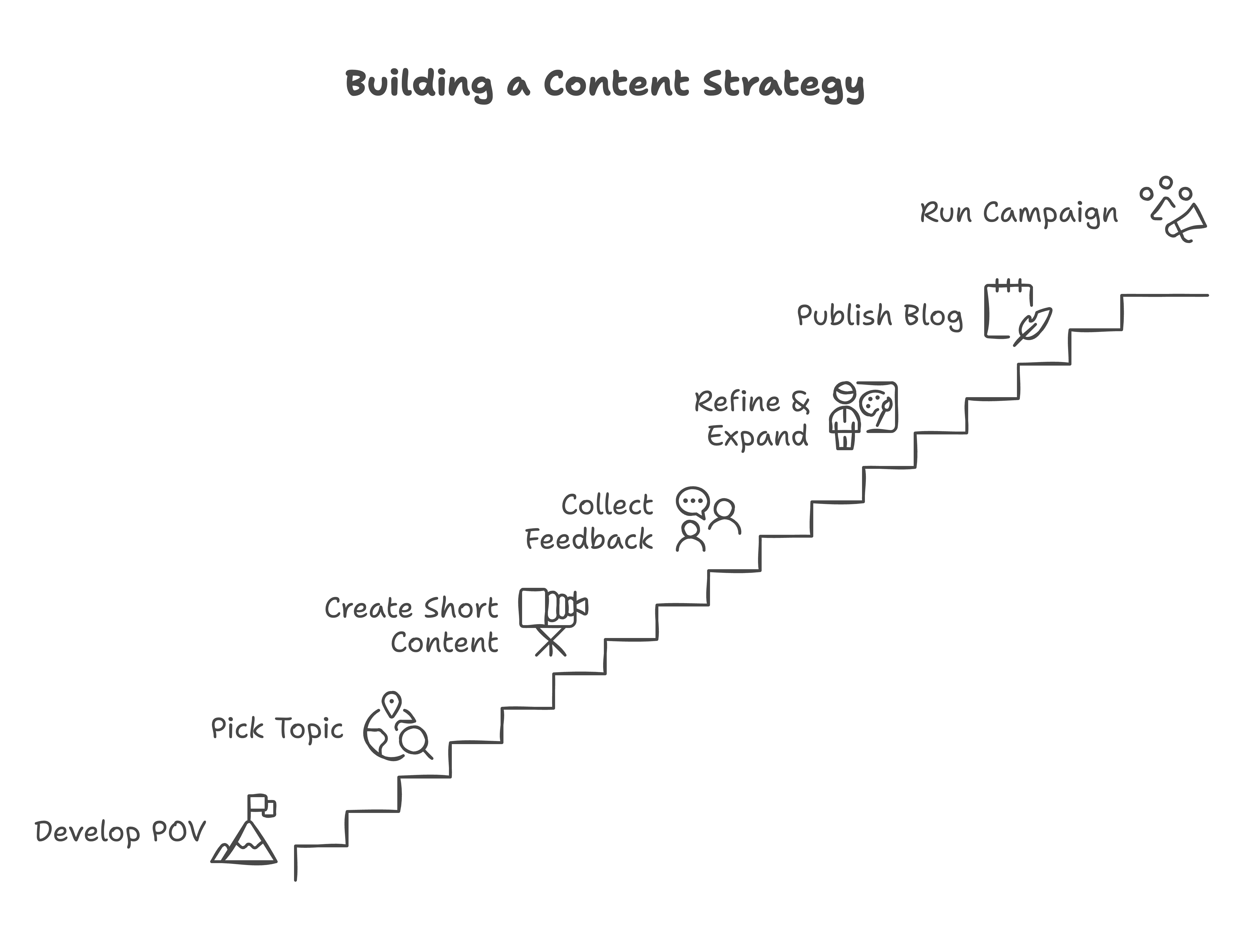Why Your Blog Should Be the Last Step in Your Content Strategy (Not the First)
If your content creation strategy still starts with a blog, you're doing it all wrong. In 2025, content marketing is about testing ideas, gathering insights, and then crafting a high-value blog as the grand finale. Here’s how to reverse-engineer your blog for maximum impact.
For years, the typical content creation workflow has looked something like this:
- Pick a topic.
- Write a blog.
- Post on socials & send via a newsletter.
But in 2024, that process is outdated. Your blog should no longer be the starting point of your content strategy—it should be the final, refined product of a much deeper engagement process.
The New Content Strategy: Start Broad, End Deep
Instead of beginning with a long-form blog and hoping it gains traction, the modern approach looks like this:
- Develop Your POV – Before jumping into content creation, establish a strong, differentiated point of view. What unique perspective does your company or brand bring to the conversation?
- Pick a Topic – Find a subject that resonates with your audience, aligns with your expertise, and has the potential for engagement.
- Create Short-Form Content First – Build micro-content like LinkedIn posts, Twitter threads, short-form videos, webinars, interviews, and infographics. This allows you to gauge initial interest and engagement.
- Collect Signals, Questions & Feedback – Pay attention to how your audience reacts. What questions do they ask? Which points spark discussions?
- Refine & Expand – Use this feedback loop to shape a more in-depth narrative. The insights gathered from social interactions inform the long-form blog.
- Publish a High-Value Blog – Now that you’ve pressure-tested your ideas, create a blog that synthesizes all these insights into a well-researched, engaging, and authoritative piece.
- Run a Campaign Around It – The blog becomes the centerpiece of a content campaign, amplified through further social posts, email newsletters, and multimedia formats.

Why This Works Better
1. Your Audience Shapes the Content
Instead of guessing what your audience wants, you let them tell you. Social engagement, comments, and direct messages provide real-time feedback that guides your final blog.
2. It Builds Anticipation
If people have already engaged with your short-form content, they’re more likely to read the blog because they feel invested in the conversation.
3. It Maximizes Distribution
By the time your blog is live, it already has a built-in audience that’s eager to engage. Plus, you now have multiple assets (videos, social posts, infographics) to promote it effectively.
4. It Saves Time
Rather than spending weeks crafting a blog that might flop, you test ideas in real-time. The final blog is a result of validated insights, making it more likely to succeed.
Final Thoughts: The Blog Is the Destination, Not the Starting Point
Most companies still treat blogs as the core of their content strategy, but in today’s fast-moving digital landscape, that’s backward. Your blog should be the conclusion of an iterative content journey, not the first draft of an untested idea.
By flipping the process—starting with social engagement, short-form content, and feedback loops—you ensure that your final long-form piece is not only insightful but also highly relevant and primed for maximum impact.
So next time you think about writing a blog, ask yourself:
Have I tested this idea enough in the real world? If not, start there—your audience (and engagement metrics) will thank you. 🚀
